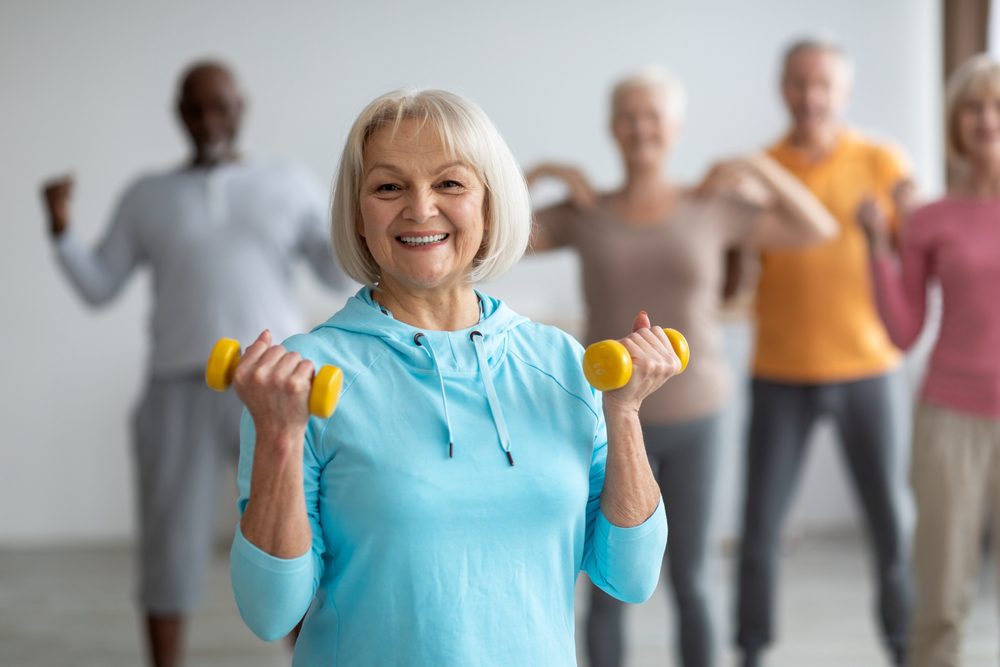Some exercise habits can make life better and more energizing, while others can leave you way too sore, frustrated, and ready to quit. Keep reading to find out which ones to avoid!
Exercise is one of the best things you can do for your body, at any age, but only if you’re doing it right. Unfortunately, some exercise habits that felt amazing in your 20s or 30s can seriously backfire once you hit 50 and beyond.
Whether you push too hard, lift too heavy, stress your joints, or skip the recovery your body now craves, these common mistakes can leave you sore, stiff, unmotivated, and even injured.
The truth? Your body evolves over time, and your workouts should evolve with it. The good news is, you don’t need a total fitness overhaul. Just a few smart tweaks can help you stay lean, strong, and injury-free for years to come.
Ready to learn which exercise habits could be sabotaging your progress after 50? Let’s dive in.

1. Skipping recovery days
If you’re used to working out regularly and feel like skipping a few days will cancel your progress, you should take a step back. If you don’t give your body the rest and recovery it needs, it will force you to pause.
Rest days aren’t laziness—they’re an important part of the process, contributing to muscle repair, relieving soreness, and overall health, especially after 50. While exercise gives you endorphins and makes you feel like you can conquer everything, let’s not forget that too much of it can leave you feeling extremely sore, fatigued, stiff, and more prone to injury.
Balance is key, so make sure you schedule at least one full rest day and incorporate active recovery like gentle stretching, yoga, or walking. You’ll feel better and come back stronger!
2. Overdoing plyometrics
Plyometric workouts can be effective and fun, but don’t forget they’re high-impact and tough on your joints, especially after 50. If you suffer from stiff ankles, knee pain, or lower back issues, all that jumping can sometimes cause more harm than good.
But don’t worry, though; you don’t have to say goodbye to plyo forever. What you can do instead is try lower-impact versions like low box jumps, skipping rope, or step-ups. Focus on your form, pay attention to how your body feels, and don’t overdo it.
Another thing to keep in mind? Warm up thoroughly before your workout. Your joints will thank you, and you’ll still get all those explosive benefits safely.

3. Ignoring strength training
Muscle mass naturally declines after 40, and if strength training isn’t already part of your exercise habits, you’d better change that ASAP. Don’t shy away from picking up those weights, because they can help strengthen your bones, boost your metabolism, maintain and increase muscle mass, improve balance, and burn more calories.
And here’s the thing: you don’t need to go to the gym or spend a fortune on different weights. Bodyweight exercises, resistance bands, and using light dumbbells at home work wonders. All you need are 2-3 sessions per week to feel mobile, strong, and lean.
4. Forgetting to stretch
Stiff shoulders, tight hips, or back pain? These issues can easily sneak up on you if you constantly ignore mobility. Stretching your body after a workout should be one of your top exercise habits, and if it’s not already, take this article as your sign to start switching things up!
The best part? Stretching helps you maintain flexibility, improve your posture, prevent pain, boost your physical performance, walk better and easier, and sleep peacefully at night. Simply add 10 minutes of stretching or foam rolling at the end of your sweat session to warm down your muscles and get all those benefits in.
5. Sprints
Sprints are excellent for burning fat and boosting metabolism, but after the age of 50, your body might not recover as quickly as it once did. Sprinting at full intensity without a proper warm-up or recovery can lead to joint strain, muscle pulls, and an increased risk of injury. Definitely not what you want to gain after a sweat session!
To avoid these issues, consider replacing all-out sprints with intervals at 70–80% of your maximum speed. Start with dynamic stretches to warm up and gradually increase your intensity. If your joints feel stiff, look for low-impact alternatives, such as cycling sprints or swimming intervals.
This way, you’ll still get an effective cardio workout without the harsh impact. Remember, going fast can be fun, but being smart about your training is safer.

6. Cardio overload
While cardio is great for shedding pounds and improving heart health, too much can slow down muscle gain and stress your joints. If cardio dominates your exercise habits, consider swapping a few sessions for low-impact alternatives, such as rowing, fast walking, swimming, or cycling. These are gentler on your body while still offering excellent cardiovascular benefits.
Don’t forget to also include a couple of strength training sessions each week, so you have a balanced routine that supports muscle growth, fat loss, endurance, joint stability, and overall longevity. Your body—and your energy levels—will thank you for the smarter approach.
…Are you team cardio or team strength training? Let me know in the comments below! Personally, I’m team Pilates—I love how it blends strength, flexibility, and cardio bursts all in one workout. I honestly feel leaner and more toned now than I did in my 20s, thanks to this approach!
7. Forgetting to fuel and hydrate
Poor nutrition and dehydration hit way harder after 50. Without proper fuel and water, you won’t have the stamina, energy, or recovery your body needs to benefit from all those hard workouts you do.
Skipping meals or exercising on an empty stomach might make you think you’re saving calories and therefore get closer to your goals, but it’s actually the opposite. Doing so will only lead to dizziness, fatigue, and even muscle loss over time.
Don’t forget to drink plenty of water before, during, and after your workout, too. Skipping it might cause headaches, joint pain, extra hunger, and slower recovery. You can feel your best by aiming for balanced meals with healthy fats, protein, and carbs before and after your sweat sessions.
…Eat healthily, drink your water, and don’t forget to stretch! These will do wonders for your body and mind!
8. Ignoring your balance
…If balance isn’t part of your exercise habits, this is your sign to reconsider it!
As we age, our balance tends to decline, yet many people overlook balance training in their workouts—until a misstep leads to a painful fall. Unfortunately, neglecting balance exercises can result in poor coordination, slower reflexes, and an increased risk of injury, especially for those over 50.
The good news is that it’s easy to incorporate a few balance-boosting moves into your weekly routine. You can try standing on one leg while brushing your teeth, add stability ball exercises to your strength training, or sign up for a yoga or tai chi class.
These simple additions can significantly improve your core strength, posture, and confidence, helping you stay steady on your feet for years to come.
…What are your thoughts on these exercise habits that can cause more harm than good? Are you “guilty” of any of these? Let me know in the comments below!
Until next time, here’s another useful post from Healthy Reads you won’t want to miss: 7 Everyday Habits That Lead to Heart Attack






